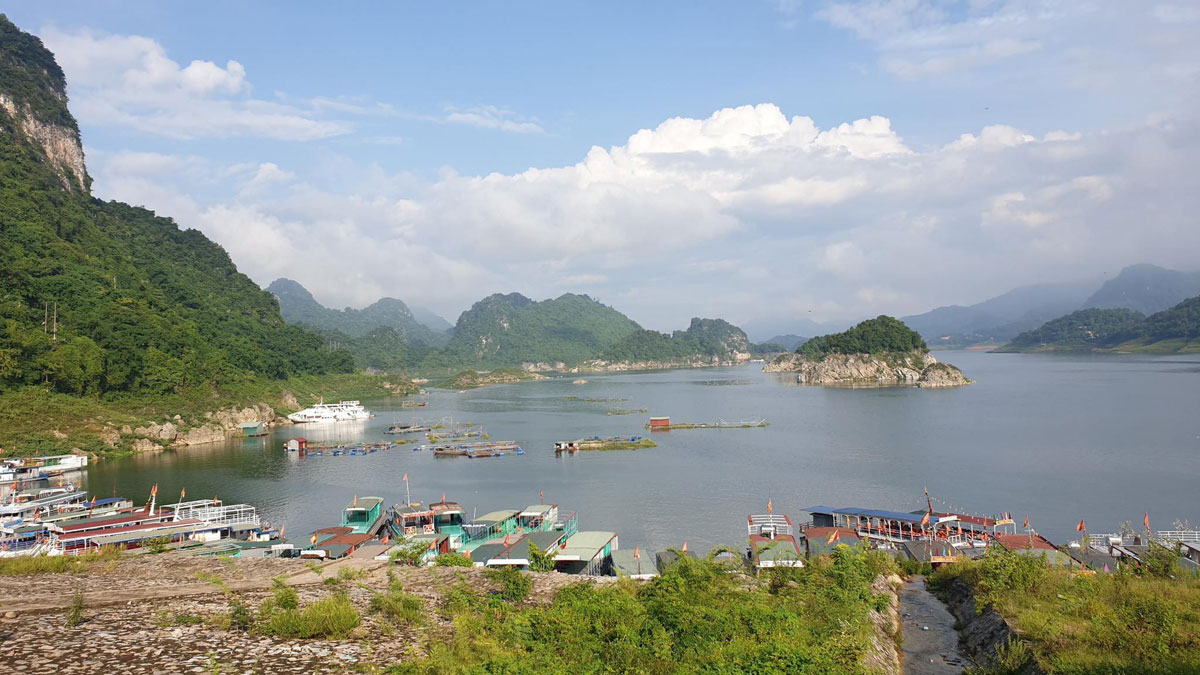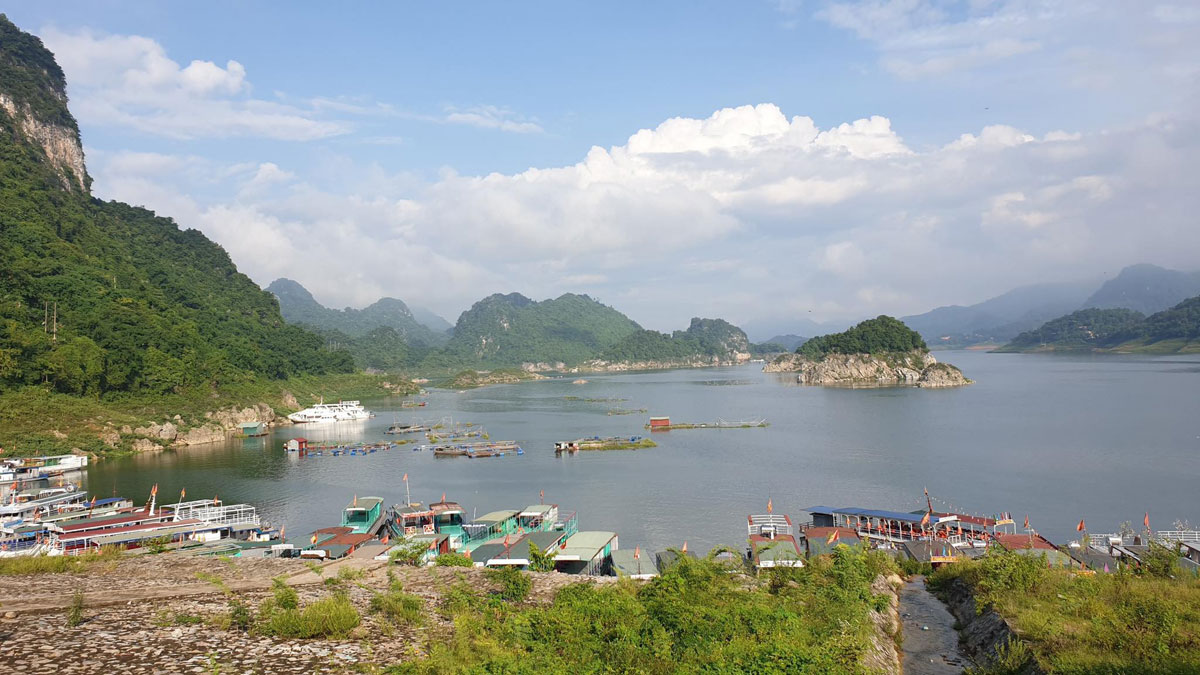


(HBO) - Hoa Binh province is prioritising a project on building and upgrading Hoa Binh lake tourism infrastructure during 2021-2025, with a target of turning the water into the province’s largest tourism centre and one of the 12 key national tourism sites of the northern mountainous and midland regions.
 Thung Nai port (Cao Phong district) needs more investment
and upgrade to serve more visitors.
Thung Nai port (Cao Phong district) needs more investment
and upgrade to serve more visitors.
Spanning through Hoa Binh City, and four districts of Da Bac, Mai Chau, Tan Lac and Cao Phong, the Hoa Binh Lake tourism site now has 107 accommodation establishments and over 200 ships transporting tourists which have created jobs for over 1,200 labourers. The total revenue from tourism activities reaches around 160 billion VND, accounting for 7.7 percent of the provincial tourism sector’s total revenue. There are currently about 20 investment projects around the lake.
In fact, these projects are currently in slow progress. Many sites with attractive tourism resources have yet to be connected with main routes, so the main means of transportation are boats. Particularly, operations at Bich Ha port are relatively complicated, as cargo and passengers share the same small wharf, whose infrastructure is weak, and the ways up and down the port have downgraded, causing poor safety. The ship anchorage in the port is limited with no shoreline protection works, and the waiting place and the bus station built unorganisedly.
In order to develop and upgrade the transport system connecting the national tourism site through waterways, and connecting key tourism sites with Hoa Binh city and the province’s main roads by roads and ports, provincial authorities have proposed building a project on building and upgrading Hoa Binh Lake tourism infrastructure. The project focuses on expanding a 33km road on the right bank of the lake, and upgrading Bich Ha port’s capacity into 300,000 tonnes of goods and 80,153 passengers a year.
At a recent meeting with representatives from the Asian Development Bank (ADB), the province proposed a loan to implement the project to build and upgrade tourism infrastructure of Hoa Binh Lake. Vice Secretary of the provincial Party Committee and Chairman of the provincial People’s Committee Bui Van Khanh emphasised that the bank’s provision of ODA capital for the project is important to speed up infrastructure development of the tourism site, thus helping it develop corresponding to its position advantage and potential so as to contribute more to socio-economic development of the province, the northern mountainous and midland region, as well as the development of Vietnam’s tourism. /.